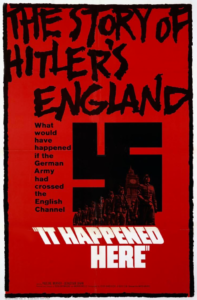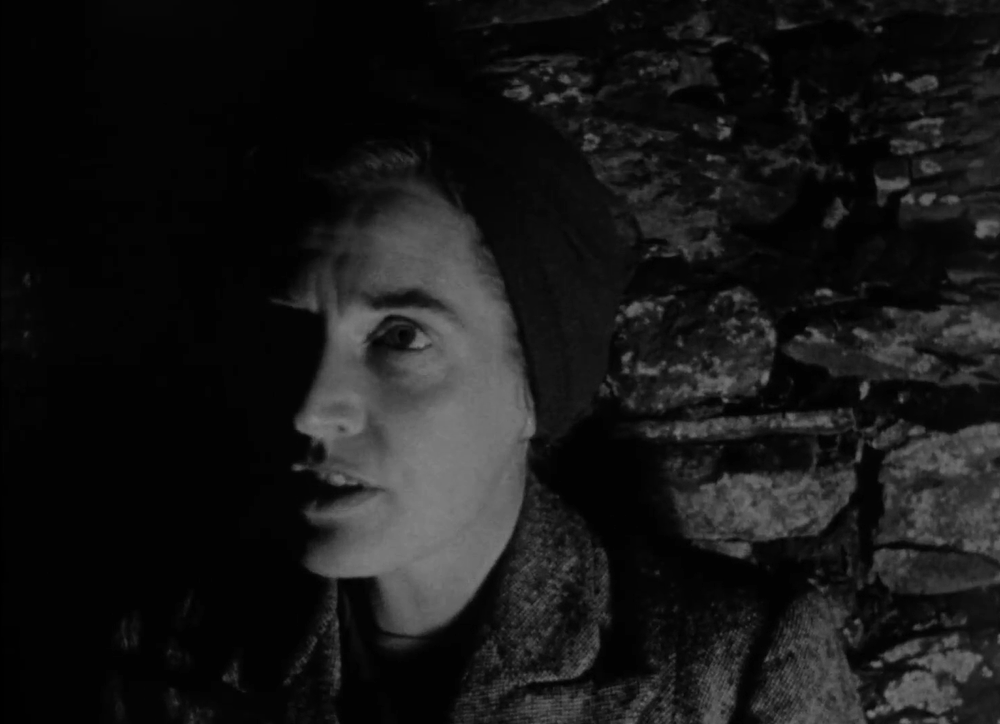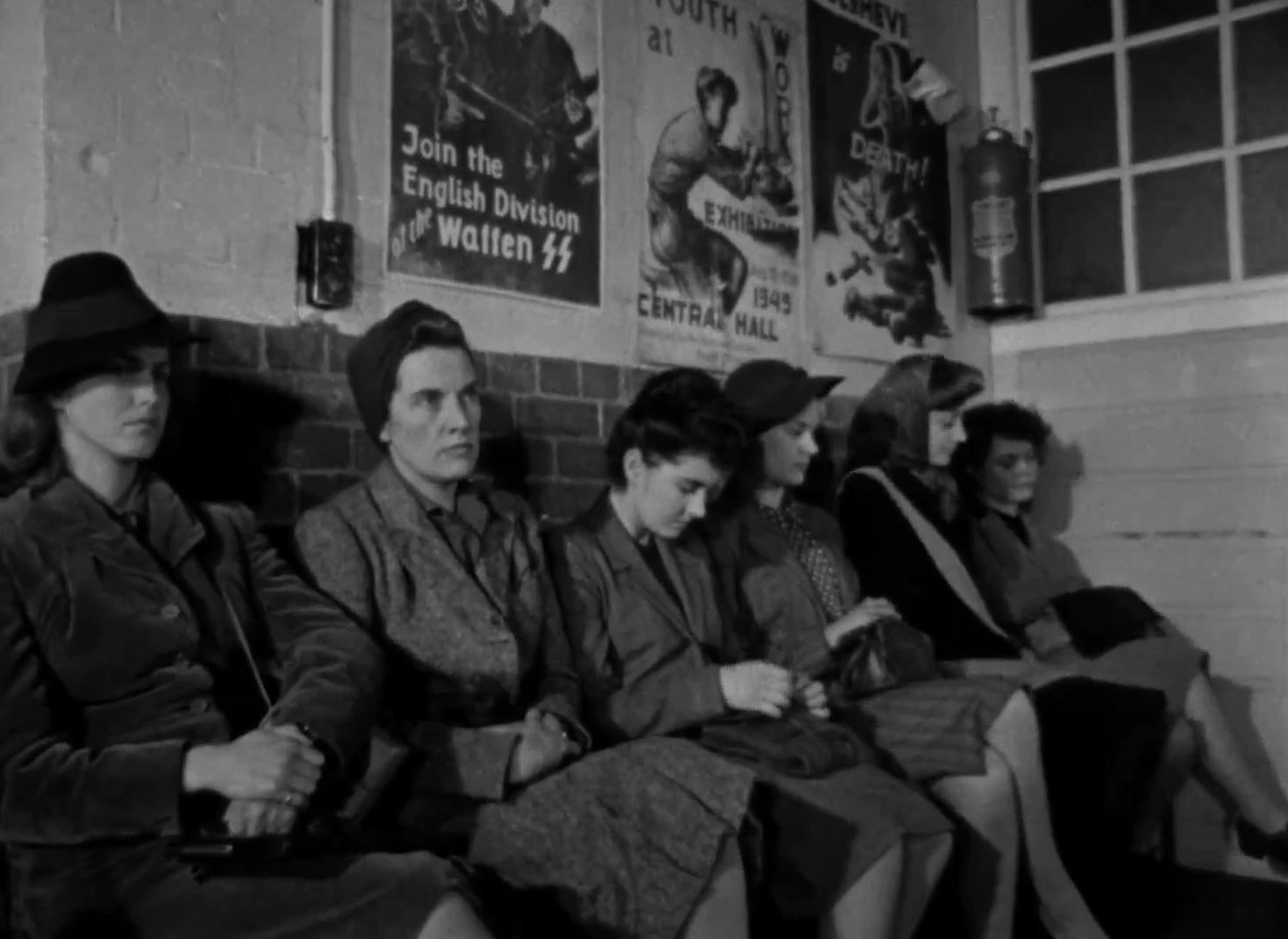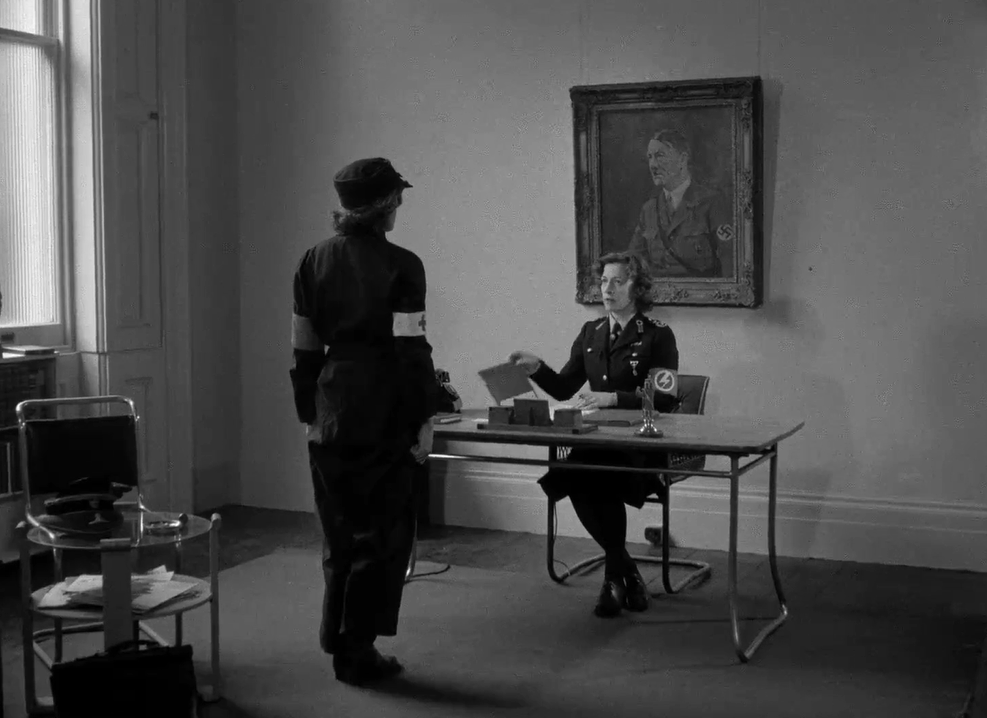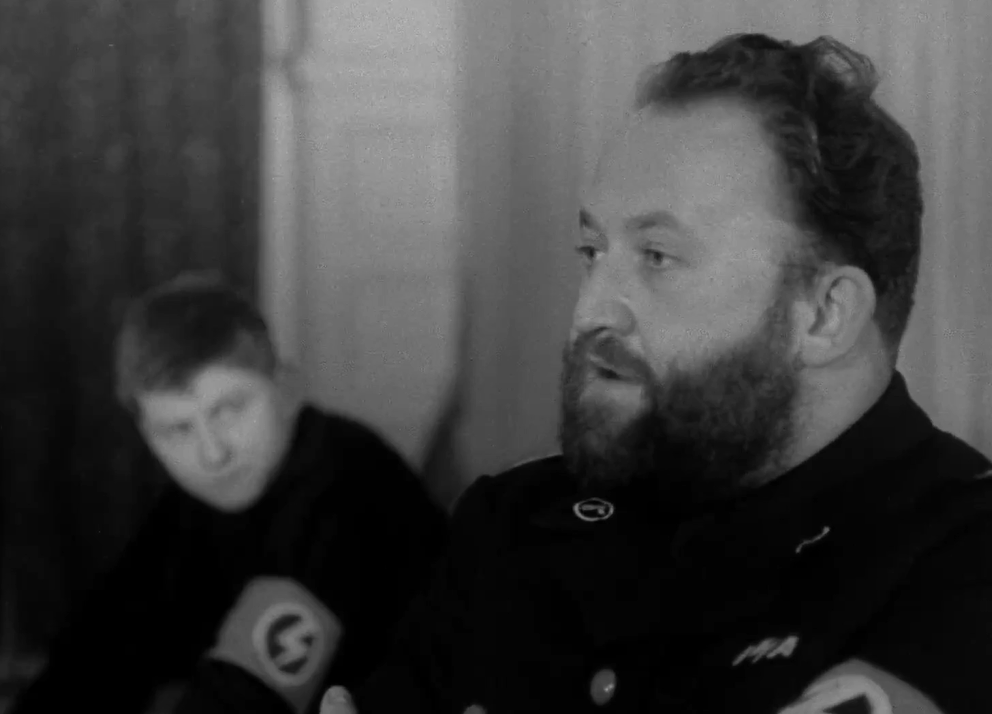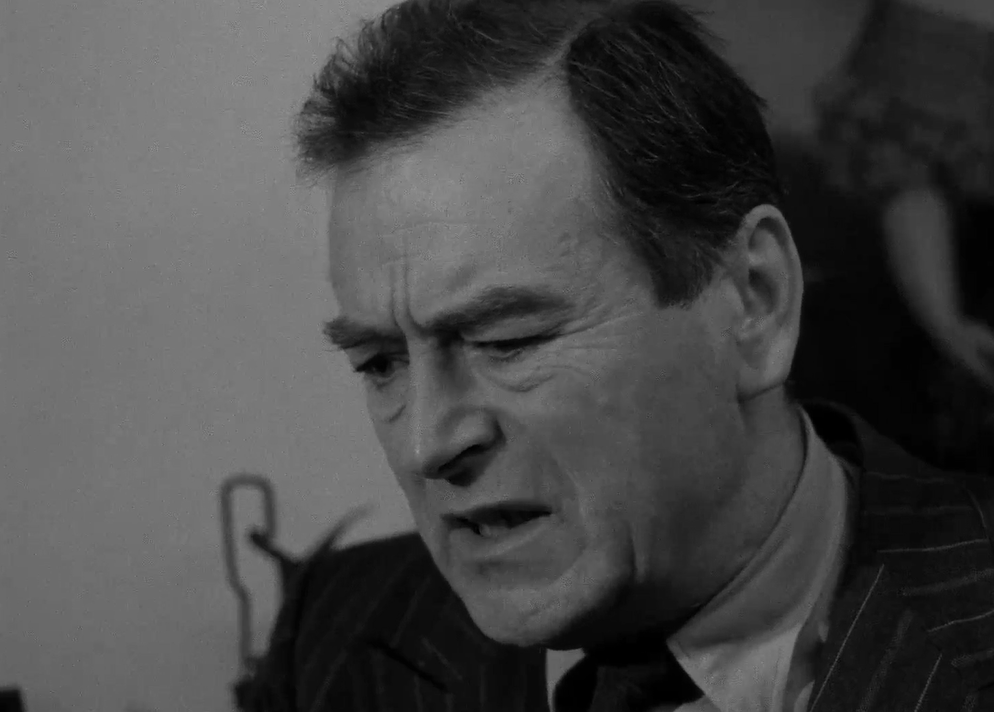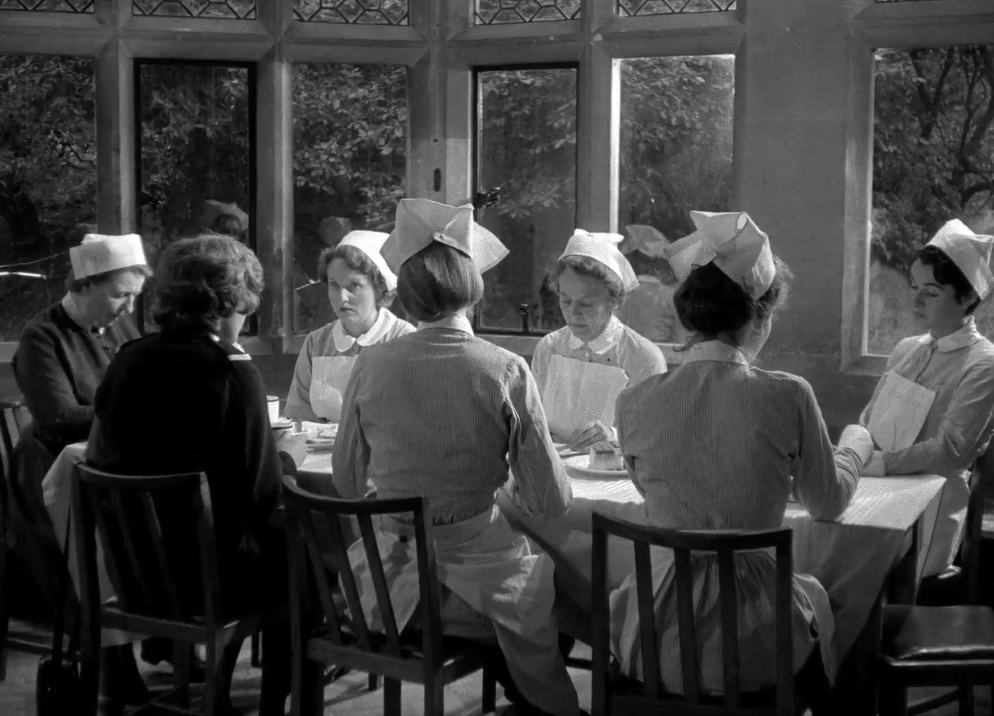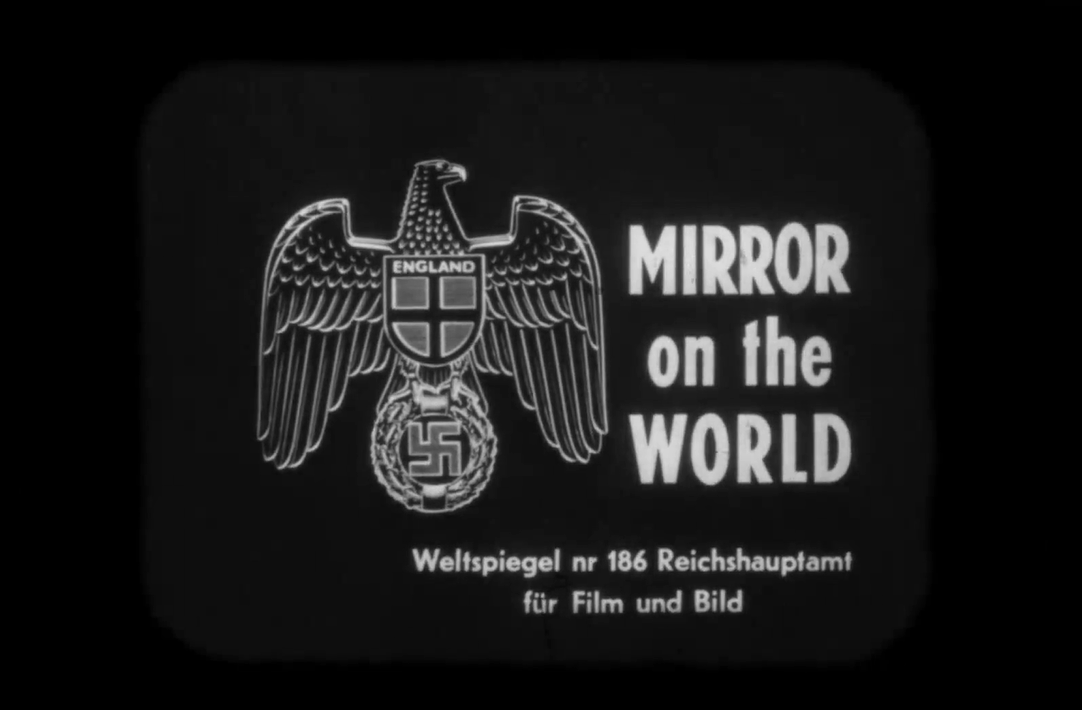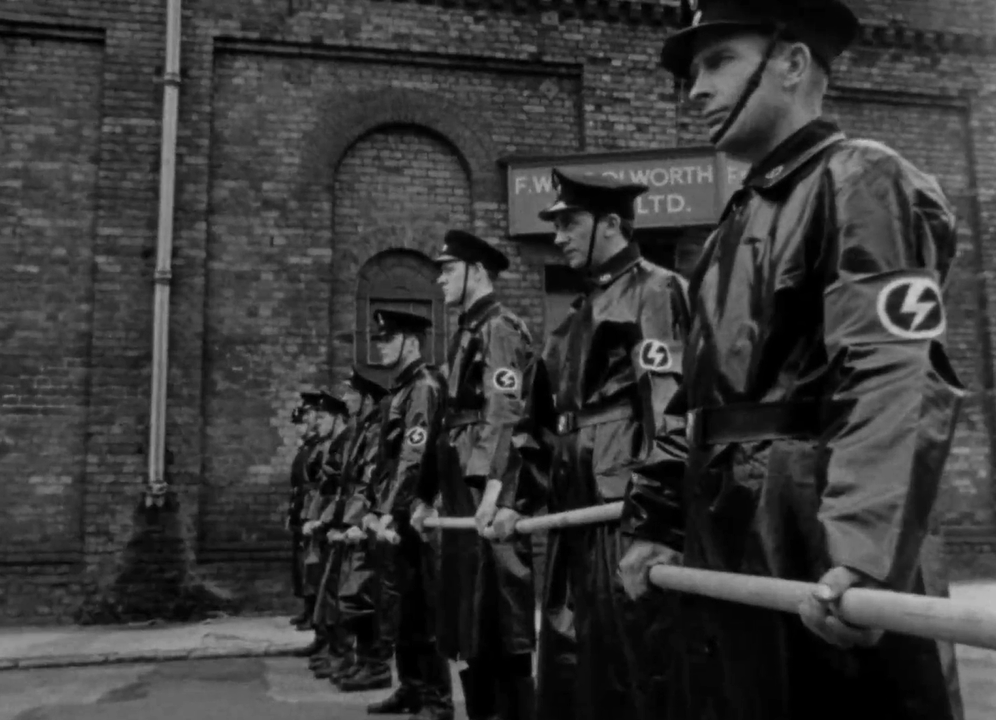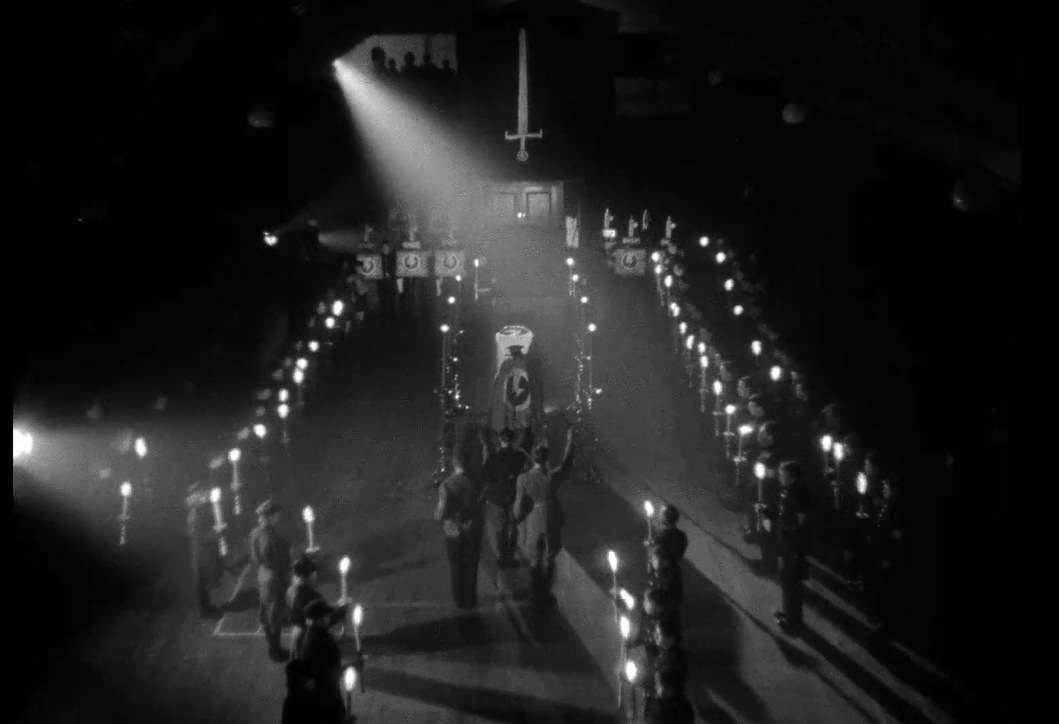It Happened Here (1964)
“We don’t accept your decisions; you accept ours.”
|
Synopsis: |
|
Genres, Themes, Actors, and Directors:
Review: … and thus crosses the murky line over into being employed as a nurse by the medical branch of her nation’s quasi-paramilitary Immediate Action Organisation (IAO), figuring it’s better to work towards social stability of some kind (any kind) than to be part of continued violent resistance. Her entrance into London shows us a truly eerie vision of what the city might have looked like under German Fascist control: … and watching Murray insidiously indoctrinated (she barely blinks an eye while sitting and listening to reprehensible talk by English Nazis): … is a frightening reminder of how easy it is for humans to simply accept the reality around them as normal. It’s only once Murray re-encounters old anti-Fascist friends — a doctor (Sebastian Shaw) and his wife (Fiona Leland) — that glimmers of her conscience begin to emerge. Her acquaintance with these brave resistance fighters is seen as betrayal, and she’s sent to a seemingly idyllic countryside hospital — where the unthinkable occurs. What’s most impressive about this low-budget film is how effectively Brownlow and Mollo manage to create an alternative vision for a 1940s England infested by Nazis; particularly helpful is a highly realistic faux-newsreel filling us in on the past few years and how things came to this state. Speaking of history, this movie’s production story is (not surprisingly) absolutely fascinating — ranging from how young Brownlow and Mollo were when they first had the idea for this film (just 19 and 16!), to the direct financial and material support they received from bigger-name directors (including Stanley Kubrick), to how they managed to secure all the costumes and props necessary to recreate the era. According to IMDb’s Trivia section:
This all adds up to a cinematic universe that’s as freaky as all get-out, and the storyline ends on an appropriately bleak note; we are reminded, as one character says, that “the appalling thing about fascism is that you’ve got to use fascist methods to get rid of it.” Notable Performances, Qualities, and Moments: Must See? Categories
Links: |
